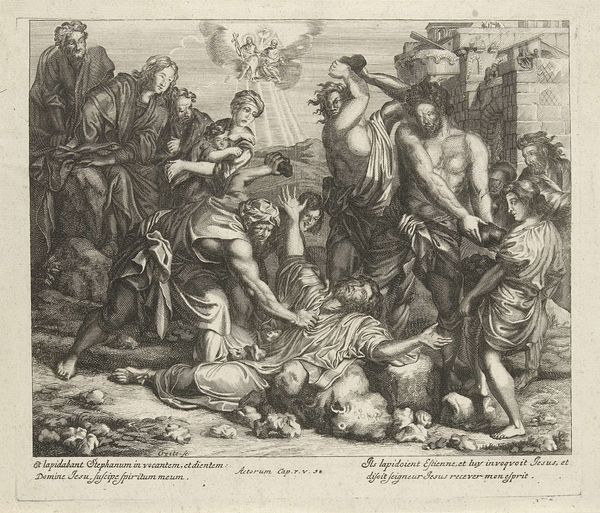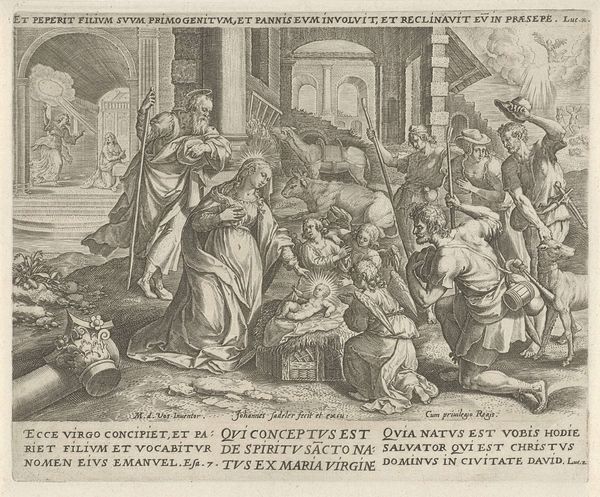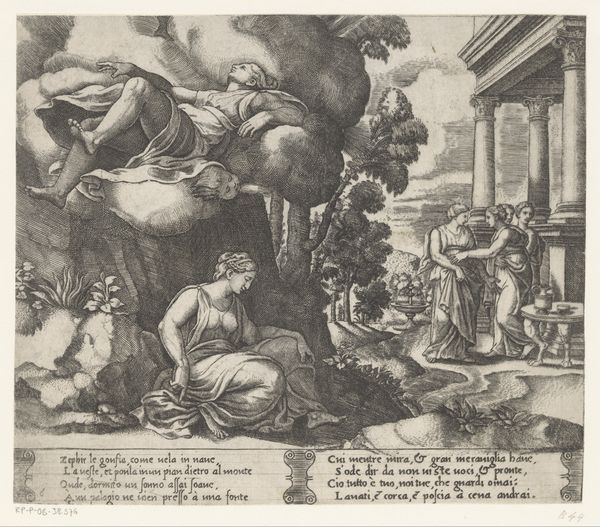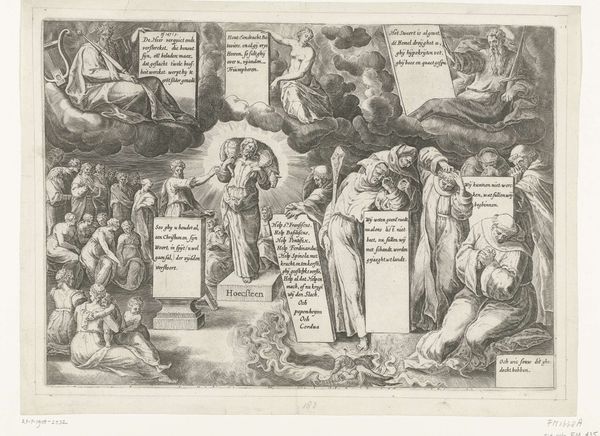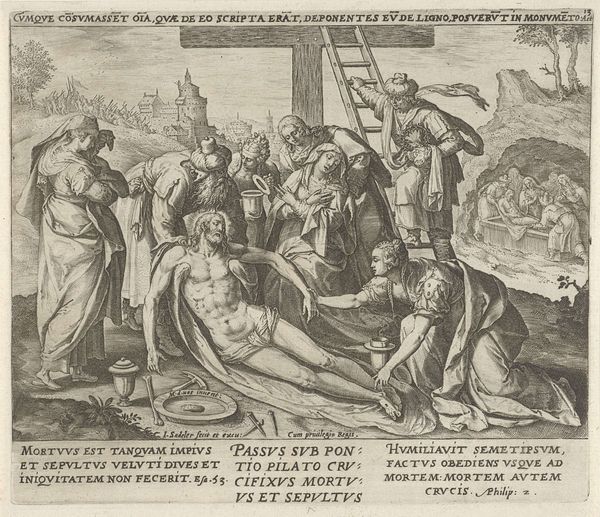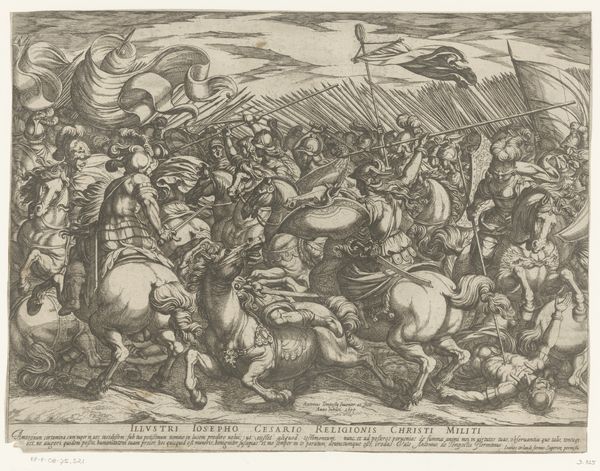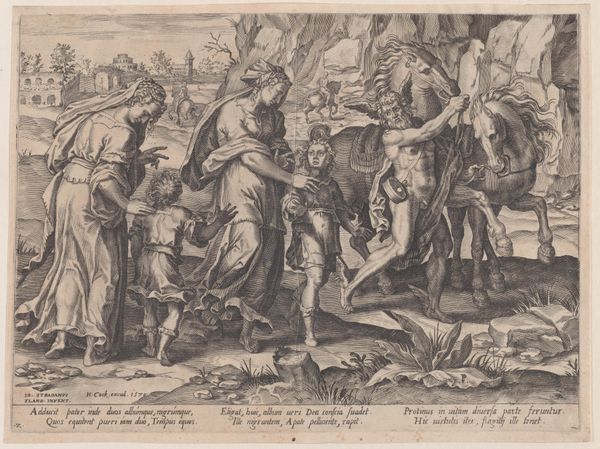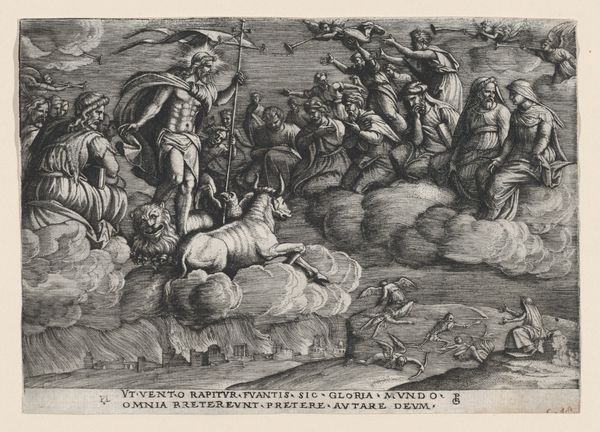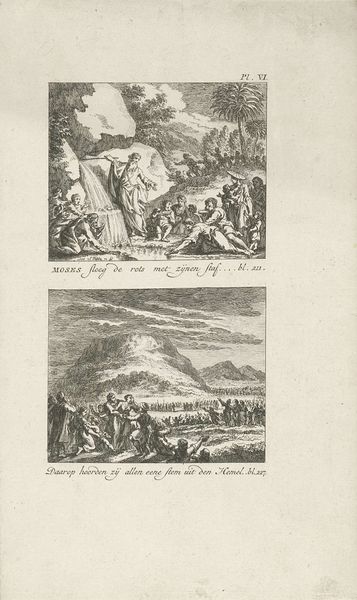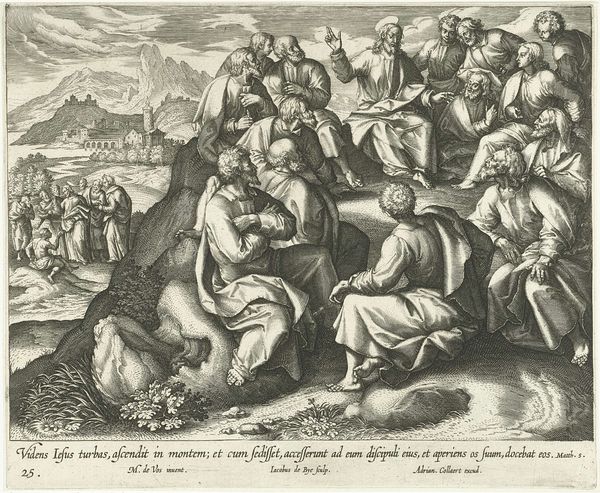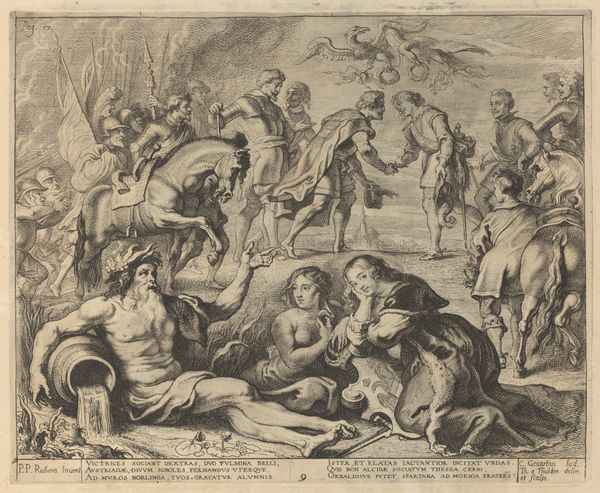
Visioen van Ezechiël over het dal van beenderen: de verrijzenis van het lichaam 1579
0:00
0:00
print, engraving
#
allegory
# print
#
mannerism
#
figuration
#
history-painting
#
engraving
Dimensions: height 209 mm, width 245 mm
Copyright: Rijks Museum: Open Domain
This engraving of Ezekiel's vision of the valley of bones was created by Johann Sadeler I, sometime between 1550 and 1601. The image depicts a scene from the Old Testament where the prophet Ezekiel witnesses a field of dry bones resurrected by God. Sadeler was active during the Counter-Reformation, a period marked by religious and political tensions in Europe. This context informs the work, which reflects the era’s preoccupation with themes of death, redemption, and divine power. Note how the skeletal figures in the foreground transition to fully formed bodies further back, representing spiritual and physical rebirth. The nakedness of the resurrected figures would have been a daring break with the prevailing puritanical representations in art at the time. Ezekiel's vision is one of hope and renewal, speaking to the human spirit's capacity to overcome even the most desolate circumstances. The emotional impact of the artwork lies in its depiction of transformation, inviting us to reflect on our own mortality and the possibility of regeneration.
Comments
No comments
Be the first to comment and join the conversation on the ultimate creative platform.
